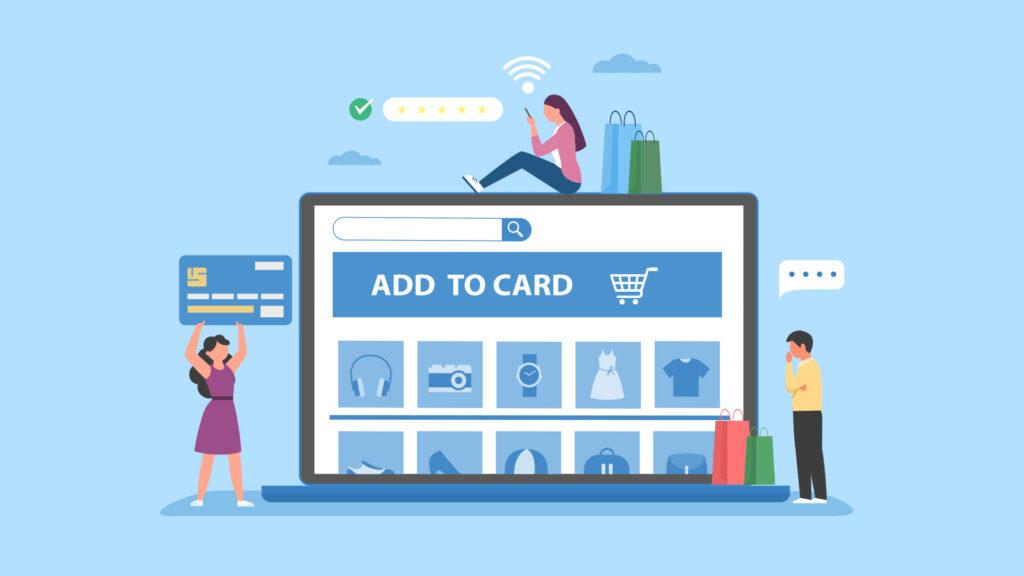Subscription-based ecommerce has become the norm. From buying groceries, products to streaming HD content online, customers have shifted from buying things as needed to a subscription-based model, where they receive products or services regularly. A study conducted by Technavio has revealed that the subscription-based e-commerce market size is forecast to increase by USD 1,043.05 billion at a CAGR of 68.3% between 2024 to 2029.
E-commerce subscription model have skyrocketed since the pandemic, with several e-commerce brands launching their subscription services. If you are running a similar business, it only makes sense to start yours. But what is a subscription business model, what are its benefits, and how can you start one yourself? We explain all the answers to those in this blog.

Discovering Subscription-based E-commerce Models
A subscription-based e-commerce model is a type of business in which customers pay a recurring fee for continuous access to a product or service. This provides a stable revenue stream for the business. These can include physical products or online services such as streaming. Opting for a subscription model is fairly easy. Some of the well-known subscription-based e-commerce model examples include Netflix, Amazon, Dollar Shave Club, and many others.
Users have to sign up online on a particular website/app and choose the plan or services they wish to subscribe to, and set up a monthly/yearly billing cycle. Some businesses might offer a free trial period for a limited time. The purpose of this is to make the user experience the product, service first-hand and make an informed decision later. Once the account is created and the plan and payment method are chosen, customers are automatically charged and get access to the services included in their plan.
Types of Subscription-Based eCommerce Models
Before you learn how to start a subscription-based business, it is essential to understand the various types of such models so that you can choose the right type suited to your business. The subscription models are categorized into the following:
- Replenishment Subscriptions: Also known as subscribe & save, this is a type of subscription model in which users regularly receive certain products after they are replenished. Examples include food items, cleaning products, etc.
- Curation Subscriptions: This type of model involves offering a curated set of products to users that, often personalized on a subscription basis.
- Tiered Subscriptions: As the name implies, this subscription model involves multiple tiers, each priced differently and offering varying access and perks to cater to different customer needs.
- Access Subscriptions: This type of subscription involves users paying regularly to access or stream content/services from respective platforms. Examples include Netflix, Amazon Prime, etc.
- Freemium Models: In this type, users are offered a free tier along with the option to upgrade to the premium experience for additional benefits.
Choosing the right types of subscription-based eCommerce models is dependent on various factors such as the products or services offered, the target audience, and business goals. One of the prime reasons why e-commerce development services opt for subscription models is to generate consistent revenue and build a long-lasting customer relationship. But these aren’t the only benefits involved. More on that below.
Benefits of Subscription-based E-commerce Models
Compared to traditional methods, the subscription-based e-commerce benefits offered by running an e-commerce subscription model for your business are immense. Apart from offering a more convenient, cost-effective way to cater to user needs, there are several other benefits you can enjoy. Some of them are listed below:
Consistent Revenue
Since customers make monthly or yearly payments for accessing your services/products, a subscription business model ensures a stable source of revenue, which allows for a level of financial predictability.
Minimal Customer Acquisition Costs
In subscription e-commerce business models, you have to continuously market your plans and services to get new customers. However, it is far easier to retain existing customers, provided that you have been offering services that meet their needs well. Ensuring customer satisfaction results in lower turnover and new customer acquisition costs.
Streamlined Inventory Management
Even though inventory management costs are comparatively lower in e-commerce businesses, the risk still exists. With a subscription model, you can anticipate user requirements and plan inventory to meet their needs when the time comes.
A Loyal Customer Base
As you address customers’ needs and offer what they want in a consistent manner, they are more than willing to become your loyal followers. This makes retaining them an easy task.
Learn How To Start A Subscription-Based Business
So, you have mastered the subscription-based e-commerce benefits and are ready to start one? Well, that involves understanding the various steps, all of which are detailed below.
Develop a Business Plan
This is one of the most crucial steps you must ensure before kickstarting your e-commerce subscription business model. You must plan the product/service to deliver, your budget, and allocate the necessary resources for product procurement, branding, shipping, e-commerce website, billing platform, subscription management, etc.
Choose the Right Subscription Model
Once you have successfully developed a business plan, you have to choose the right subscription model that suits your business. To achieve that, you have to identify your customers, the ideal subscription type and research existing competitors’ strengths and weaknesses. By gaining clarity on these concepts, you can differentiate your subscription service and effectively market your brand value.
Ensure Scalability
Your e-commerce subscription model should be scalable so that it can handle a larger number of users without compromising efficiency and system stability. Make sure to invest in robust, scalable infrastructure, offer different pricing options, and adjust services as required. This ensures that your business isn’t affected by the rising demand for services.
Test & Launch The Subscription Model
Once the subscription business model is developed, perform continuous quality checks and testing to ensure that the system is fully functional and doesn’t have any sort of performance issues. As the launch date approaches, this is something you must do without fail. It is recommended to invest in digital marketing strategies to promote your e-commerce business models before launch.
Collect user feedback
Once your target audience starts using the model, make an effort to collect their valuable feedback and suggestions, which can be used to make improvements and enhance your subscription offering. The point is to be willing to adapt your model based on customer feedback, market trends, and evolving business requirements.
Achieving SEO for Subscription-Based Ecommerce
To achieve a successful online e-commerce business presence and get better insights, it’s crucial to invest in and optimize your subscription website seo strategies. You can leverage data analytics tools to better understand your marketing efforts and offer personalized recommendations to users. Incorporating effective content marketing strategies, such as blogs, social media posts, email marketing, etc, it is possible to consistently maintain customer interest.
A well-executed subscription website seo strategy leads to higher retention rates and long-term growth. When tracking the performance of your e-commerce subscription model, analysing these SEO KPIs (key performance indicators) such as churn rate, customer lifetime value, average revenue per user, etc, helps refine your strategies for better results.
Challenges of Implementing Subscription Models
Despite all these exclusive benefits, e-commerce subscription business models do have their fair share of challenges, and some of these concerns are as follows:
Recurring Invoicing
One of the main challenges of subscription models is the monthly or yearly invoice generation process for subscribers. This might be manageable for a small business with limited users. However, for a growing business with a larger follower base, this is a challenge unless the process is automated.
Pricing & Plans
Pricing and plans are the two most important concepts in an e-commerce subscription model. If you have multiple plan offerings, they have to be priced correctly to justify the perks each plan offers. For eg, charging an unrealistic amount for a plan with minimal benefits isn’t reasonable. Customers always have other options if your pricing isn’t right; remember that.
Transaction Management
Transaction issues can arise in subscription model businesses. Sometimes, the money might get debited from the user’s side, but it may not reach the destination. In such cases, the money has to be refunded without long waiting times. Failure to correct these issues can be fatal for your business.
Winding Up
Subscription-based ecommerce model is an effective way to get more customers, enhance brand loyalty, and generate a steady revenue stream. As there are multiple types of subscription-based eCommerce models to choose from, it is important to plan your business and select the one that fits your overall brand goal. Also, addressing the challenges of implementing subscription models is required to prevent any hiccups of sorts. The guide explained above should help you get started. Or you can always choose the most reliable e-commerce seo service company in Dubai to get the job done, which is what we recommend.
Related Post
Publications, Insights & News from GTECH








